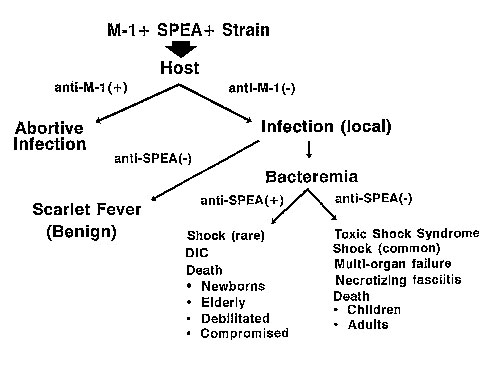Volume 1, Number 3—July 1995
Synopsis
Streptococcal Toxic-Shock Syndrome: Spectrum of Disease, Pathogenesis, and New Concepts in Treatment
Figure

Figure. Pathogenesis of scarlet fever, bacteremia, and toxic shock syndrome. M-1+SPEA+=aGAS strain that contains M protein type 1 and streptococcal pyrogenic exotoxin A (SPEA); + anti-M-1 = the presence of antibody to M protein type 1; -anti-M-1 = the absence of antibody to M protein type 1;anti-SPEA+=antibody to SPEA; and DIC = disseminated intravascular coagulation.
Page created: December 20, 2010
Page updated: December 20, 2010
Page reviewed: December 20, 2010
The conclusions, findings, and opinions expressed by authors contributing to this journal do not necessarily reflect the official position of the U.S. Department of Health and Human Services, the Public Health Service, the Centers for Disease Control and Prevention, or the authors' affiliated institutions. Use of trade names is for identification only and does not imply endorsement by any of the groups named above.